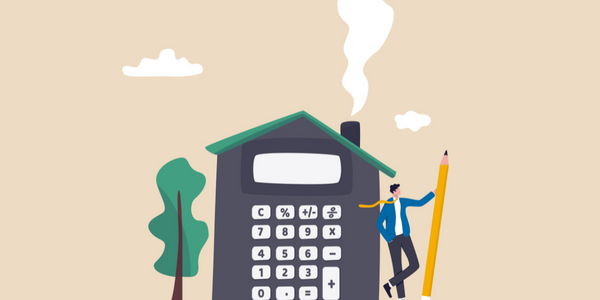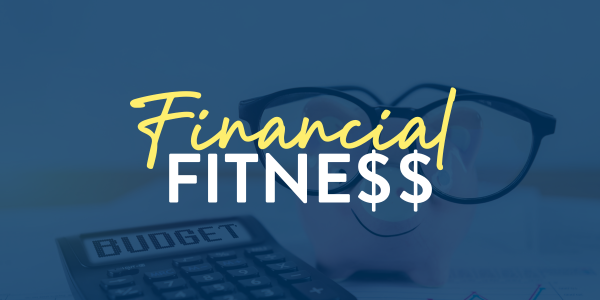
Low interest rates mean one thing – opportunity! For first-time homebuyers, low interest rates are an added incentive to purchase their dream home. For current homeowners, this attractive lending environment can result in big savings if they refinance. 
The decision of whether to refinance isn’t the only one homeowners should weigh, however. There is also the matter of the loan’s term. Should you refinance from a 30-year, fixed-rate mortgage into a newly minted 30-year equivalent? Or should you move into a 15-year fixed loan? If you currently have a 15-year mortgage, should you consider extending that into a 30-year loan?
Everyone’s situation may be unique, but there’s a solution out there for all borrowers. Let’s consider a few facts…
A 15-Year Loan Can Yield Big Savings
Yes, your monthly payment will increase if you’re refinancing from a 30-year loan into a 15-year loan, but the bulk of that money is going toward the principal. Not only do interest rates tend to be lower on 15-year loans, but you’ll pay down that debt at a much faster pace.
Lower interest rates + paying off the loan sooner = tons of money in your pocket! These funds can go toward any number of things, from bulking up your savings account to financing a home renovation, college education or dream vacation. The sky’s the limit on what this extra money can do!
Paying Off Your Loan Sooner Brings Peace of Mind
Housing is one of the biggest expenses most people will have. While a 15-year mortgage will have a higher monthly payment than its 30-year brethren, you’ll own your home outright in nearly half the time. If you refinance from a 30-year loan into a 15-year equivalent, you could save yourself a decade or more of payments, depending on your new loan terms.
Eliminating this massive housing cost can do wonders to your psyche. You can sleep easier knowing that, no matter what happens, you have a stable roof over your head – and a wealth of equity to tap into, should an emergency arise. Paying off your mortgage is also an ideal scenario for homeowners approaching retirement age, as it rids them of one of life’s biggest expenses. Regardless of your situation, your money can go a whole lot farther when a housing payment is taken out of the equation.
Interest Rates are Even More Attractive for 15-Year Mortgages
Published interest rates look good already, but they look even better if you’re thinking about refinancing into a 15-year mortgage. That’s because lenders almost always charge a lower rate for 15-year loans. Shortening your payment window may result in a higher monthly payment, or it may not. With today’s low mortgage rates, this could be your perfect time to make that term reduction with little impact to your budget.
Cash Flow Should Be Considered Before Refinancing
Refinancing into a 15-year mortgage can have tons of benefits, but it doesn’t come without its drawbacks. You want to make sure you can easily cover all living expenses and maintain a three- to six-month emergency fund before you tie up a larger portion of your cash in your mortgage payments.
Remember, interest rates are low right now because things have changed. It may be best to stay in a 30-year mortgage if the loss of that extra cash will be palpable each month.
At the same time, refinancing from a 15-year mortgage into a 30-year term can buy you some wiggle room if you’re struggling with cash flow. A longer payment term typically means a higher interest rate – not to mention more payments with that compound interest tacked on – but it can relieve some of the pressure if your monthly mortgage payment is becoming unsustainable.
Other Investment Opportunities May Be a Better Play
Even if cash flow isn’t an issue, you want to make sure the disposable income you do have is helping you achieve your goals. Refinancing into a 15-year mortgage may save you money in the long-run, but was a higher mortgage payment the best use of that cash? Retirement accounts, high-interest credit card debt, emergency funds and college savings plans can all benefit from those funds as well.
A financial advisor can help you review your current financial situation and goals, but you should at least be aware of the potential for bigger payoffs depending on how you put that money to work. Sometimes that payoff will yield the biggest results by refinancing into a 15-year mortgage, and sometimes it won’t.
Extra Payments Can Also Pay Off Your Mortgage Faster
Refinancing into a 15-year mortgage isn’t the only way to pay off your loan faster. This goal can also be achieved by submitting one extra mortgage payment a year. Just make sure your loan servicer knows this 13th payment should be applied to the principal.
Some borrowers submit this extra payment in one sum, while others choose to pay their mortgage bi-weekly. Since there are 52 weeks in a year, they will end up making 26 half payments, which translates into 13 full payments…and extra interest savings! Generally, paying 1 extra payment per year consistently will shave off about 5 years from a 30-year term (depending on your rate and loan amount this may vary).
Fees Should Be Factored into Your Decision
Regardless of whether you’re refinancing into a 15-year loan to save money over the long-term or into a 30-year loan to free up money now, you’ll want to be mindful of the fees and closing costs involved. If you’re refinancing solely for a lower rate, it’s generally advisable to make sure the new rate is at least a 1% drop from your current one. This helps offset the costs associated with a refinance. If it’s less than 1%, consult with a loan advisor to determine your cost options to recoup that investment.
You Should Know How Long You Want to Stay in Your Home
While a drop in interest rates can help recoup some of the costs associated with a refinance, this can only happen if you plan to stay in the home long enough for these savings to accrue. It typically takes at least three years for the interest rate savings to outweigh the closing costs and fees. If you don’t think you’ll be there that long, it may be best to stay in your current mortgage.
We know you have a lot to think about when it comes to whether you should refinance and what type of loan schedule works best for your situation. We’re happy to review these considerations with you as you weigh the cost, convenience and timeline of refinancing into a 15-year or 30-year mortgage. We’re here anytime!
*Refinancing may result in finance charges that may be higher over the life of the loan. Consult with your loan advisor for details.







